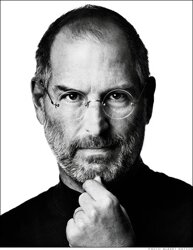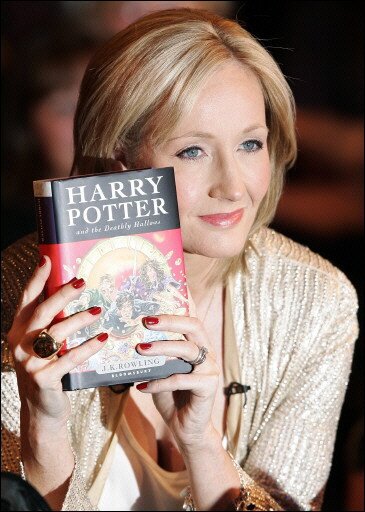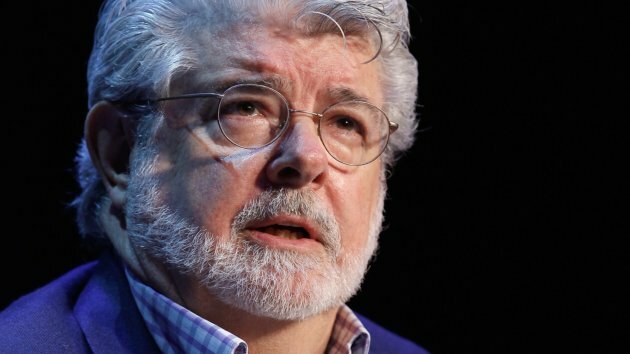 If you’ve never seen a ‘Star Wars’ or ‘Indiana Jones’ movie you’re missing out because love them or hate them, they are a prime example of what it means to create a product that is the best in its field!
If you’ve never seen a ‘Star Wars’ or ‘Indiana Jones’ movie you’re missing out because love them or hate them, they are a prime example of what it means to create a product that is the best in its field!
Creation is an escape from the concrete world around us and if you can create an escape for all kinds of people, for the whole 120 minutes that your movie is on, you’re successful. If you can create that escape for much longer than that first year the movie comes out, you’re a genius. And that’s exactly what George Lucas did within his films.
Not only do the movies appeal to all kinds of people across generations, they also changed the face of sci-fi fiction. And that’s what ‘creating’ is all about – being innovative in a way that the people like.
As one of the most successful and well known American screenwriters, directors, producers and entrepreneurs George Lucas is at the prime of his field and has shaped the movie world for the inheritance of future generations. For these reasons I figured it’s about time that I bring him to your attention here at One Life Success.
Early Life: In a Galaxy Far, Far Away
George Lucas was born in Modesto, California to Dorothy and George Senior Lucas in 1944. His mother didn’t work, officially, but his father owned a stationary store nearby. The couple had no other children besides George.
Initially George’s heart lay with racing cars. As a result he spent most of his school years in garages and underground circuits, working on what he loved. But in 1962, shortly after his graduation, Lucas was gravely injured in a car accident. It was this event that put him off his love for cars and drove him towards his interests in movie-making.
At College Lucas studied multiple subjects including Literature and Sociology and it was around this time that he began to combine his past love for cars with his new love for movie making by using an 8mm camera to film car races. This new hobby was fuelled by Lucas’ best friend John Plummer who also had a passion for films.
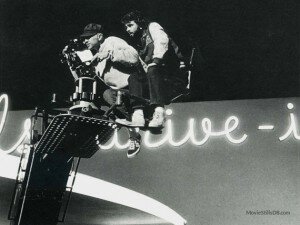 As a young man, Lucas also met Haskell Wexler. Wexler was a cinematographer who shared George’s love for car racing and proved to be a significant contact for the future. Having worked with Lucas on various occasions he was getting more and more impressed with the talents that the young boy showed and encouraged Lucas to attend the Southern California School of Cinematic Arts for his further education.
As a young man, Lucas also met Haskell Wexler. Wexler was a cinematographer who shared George’s love for car racing and proved to be a significant contact for the future. Having worked with Lucas on various occasions he was getting more and more impressed with the talents that the young boy showed and encouraged Lucas to attend the Southern California School of Cinematic Arts for his further education.
It was at this school – one of the first that focused on motion picture – that George joined a group of film students known as The Dirty Dozen. Each member of the dozen, fuelled the others in their dream to change the world of cinema – one of which included Steven Spielberg who Lucas later went on to collaborate with on the ‘Indiana Jones’ Series.
Although much of Lucas’ learning occurred outside of the classroom, his school did play a major role in motivating the young student by exposing him to filming techniques, documentaries and ‘pure cinema’ each working day. In this sense, learning about all these things became a second nature to Lucas and he still breathed cinema in his spare time where he made 16mm visual poems and mini-films.
After graduation in 1967, Lucas attempted to join the Air Force and was turned down for his track record of speeding tickets. Shortly after he was asked by the Army to fight in Vietnam but again this attempt to join the service failed, this time because George’s medical tests revealed that he had severe diabetes.
Determined to help out anyway, Lucas became a teaching instructor of cinematography for a class of Navy students and continued making films in his spare time. One such short film included ‘Electronic Labyrinth’ which won a prize at the student Film Festival. In light of this success Lucas made a full-length adaptation to the movie, an adaptation that earned him a student scholarship from Warner Bros.
Career: A New Hope
With the money that he earned from working, Lucas co-founded American Zoetrope alongside Coppola – who also had a Warner Bros scholarship. The studio was designed to meet the needs of filmmakers outside of Hollywood and was first used to produce THX 1138, a futuristic sci-fi movie. THX was not a success but ‘American Graffiti’ directed within his new company, Lucasfilm was and added to his reputation as a budding moviemaker.
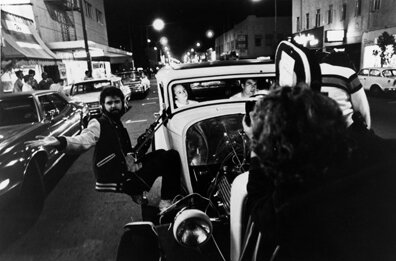 In this sense, Lucas’ film work in the early to mid seventies was the work that truly established him as a recognised figure on the Hollywood scene because although it didn’t produce him blockbuster after blockbuster, it did build up his name in the movie industry. Of course, the work that was most significant within this time frame was, unarguably, Star Wars.
In this sense, Lucas’ film work in the early to mid seventies was the work that truly established him as a recognised figure on the Hollywood scene because although it didn’t produce him blockbuster after blockbuster, it did build up his name in the movie industry. Of course, the work that was most significant within this time frame was, unarguably, Star Wars.
Star Wars not only restored Fox to financial stability but it also built itself up to be the highest grossing film of all time, at the time. Lucas couldn’t believe the welcoming reception for the film and, as a result of its success, was encouraged to ask for a higher fee than agreed for his movie.
In the end Lucas declined to do so in favour of asking for ownership of merchandising rights instead. The rights were granted quickly and without fuss, due to Fox’s poor financial position and Lucas earned millions from the toys, collectibles and games he designed and made for the franchise. Again, with the money he earned, he funded his journey further and built an effects company, which is now one of the most well-known and efficient companies in the industry.
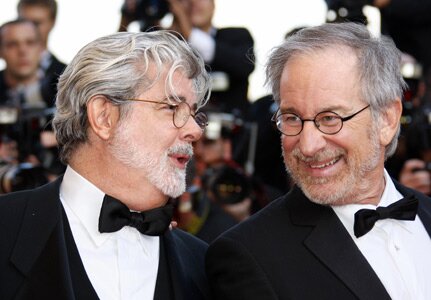 Following this, the opportunities kept coming in and Lucas got to work, as writer and producer, on the ‘Indiana Jones’ series – directed by his college friend Steven Spielberg. Alongside this, Lucas worked on Star Wars follow-ups and multiple other movies including ‘The Land Before Time’, ‘Willow’ and ‘The Young Indiana Jones Chronicles’.
Following this, the opportunities kept coming in and Lucas got to work, as writer and producer, on the ‘Indiana Jones’ series – directed by his college friend Steven Spielberg. Alongside this, Lucas worked on Star Wars follow-ups and multiple other movies including ‘The Land Before Time’, ‘Willow’ and ‘The Young Indiana Jones Chronicles’.
It was around this time that Lucas married Marcia Griffin who won an Academy Award for his editing work on the Star Wars movie. Unfortunately, despite adopting a daughter together, the marriage didn’t work and they divorced in 1983. Following the divorce George went on to adopt two more children, Katie and Jett Lucas, both of whom appeared beside his eldest child in Star Wars.
Pixar, now a world famous animation studio, had been founded as the Computer Division of Lucasfilm for many years but in 1986 it was purchased by Steve Jobs, who also put capital into the company as a whole.
This funding prevented Lucas’ income from dipping after a harsh divorce and an expensive seven years of research projects. It also paved the way for Lucas to found THX Ltd, a company that later produced gaming products under the name LucasArts.
The Star Wars sequels received negative reception from some fans, but they were still high grossing and he continues to serve as the producer of The Clone Wars animated television series and movie today.
Retirement
After declaring his retirement in 2012 Lucas had a shift of focus from large-scale blockbusters and awards ceremonies to independent features and family life. He married DreamWorks Animation chair-holder Mellody Hobson in 2013 and went on to have a child, Everest Hobson Lucas the same year.
Lucas sold LucasFilm to Disney in 2012 and is now currently the second biggest shareholder in Disney from it. But don’t think that Lucas made these changes with money in mind. He has pledged to give half of his wealth to charity and to continue working alongside Disney as a ‘creative consultant’ in the new Star Wars movie.
Say what you like about Lucas’ retirement but there is no denying that the work Lucas did stick around to do will forever remain as the most fundamental base for his success and the success of future movie makers for generations to come.
Lucas’ Life Lessons: Lucas Strikes Back…
1) Know When to Quit!
In 2012 Lucas sold his company to Disney. The news spread like wildfire and both disgusted and excited his dedicated fans because although this news meant that a new Star Wars movie was due (Disney had been making plans for a new one for years!) it also meant that Lucas was retiring from his throne in the cinema business. Fears were confirmed when Lucas announced his retirement and appointed Kathleen Kennedy as co-chair woman of Lucasfilm Ltd.
But although some may suggest that this was Lucas ‘giving up’ what prestigious titles he held, I disagree. If you have an everlasting idea – in this case Star Wars – it will forever belong to your name and nobody can take that away from you.
As self-developers, your work is of course important, but you have to realise that you’re human too and you won’t always be able to keep producing amazing things. George Lucas knew when to quit and, although fans of the Star Wars series may not see it this way, in quitting he was able to preserve the artist he was and the work he did at the highest of qualities.
Remember, it is just as important to celebrate the successes you have as to make new ones and by taking time out to donate to charities and spend time with his wife in his great big house – Lucas is adding to the richness of his life. Something he has probably never had time to do before.
2) Grow A Thick Skin – From Day One!
Nobody told George Lucas that he would become the movie sensation that he did, just as nobody will tell you that you will become the writing/mathematic/business sensation that you can and will. But learning to shrug off the doubt is a skill best learnt during the early stages of your journey.
When Lucas went to film school, the people around him told him that he should get serious. That he’d never find a job afterwards. That he would basically amount to nothing. But Lucas ignored these comments and he pushed on, all in the name of success.
This skill, once learned, helped Lucas to shrug off negative comments throughout the rest of his journey too, meaning that he could more efficiently drive forward towards his vision. Sometimes it’s important to keep yourself in mind when you’re putting your creation into business because the best creations are the ones that come from ‘the vision’ that you’re aiming to protect.
3) Work with People!
When we’re working away on a project in our bedrooms, offices or even the school library it’s easy to get completely absorbed by the task at hand but one of the most important lessons an entrepreneur can learn is that you have to work with people and understand people to provide for them, and the more you help others, the more they’ll help you.
Without Steve Jobs’ funding, George Lucas would have crashed and burned and there would be no Star Wars prequels. Similarly, without George Lucas’ support for his good friend Steven Spielberg, there would be no Indiana Jones. Never think that making connections and contact isn’t important in both business and life, because it is. Independent work gets the job done. But who knows what potential ideas will be wasted just because you didn’t take the time to work with others.
From a less business-contacts perspective, people can also motivate you further in your work and help you understand what the people at the time want from your creations. Understanding the world around you takes time, but it’s time that will make your products much, much richer and valuable to those that matter.
Like this post? Want to read more? Why not check out our other inspiration people series posts by clicking here.
Wrote by Aimee Hall - Follow us - Comment Below!
